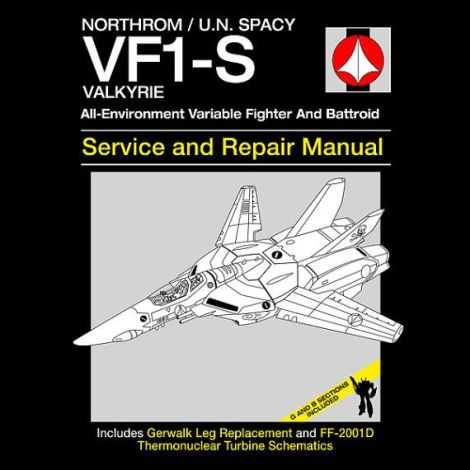
Introduced in 2007, the Stonewell/Bellcom/Shinnakasu Valkyrie variable fighter was the premier aerospace superiority fighter/battroid of Space War I, and served with the UN Spacy well into the 2020s.
In 1999, a large object impacted South Atria Island in the Pacific Ocean, causing world-wide disruption of weather. Investigations of the object determined that it was an alien warship, which was dubbed ASS-1 (stop laughing!). These aliens were roughly five times the size of a human, and their technology was highly advanced (dubbed “Overtechnology” by UN researchers). The irrefutable proof of alien forces warring out in space, along with the lingering after-effects of the impact, led to the UN drafting plans to form a unified world government to further investigate and reconstruct the alien ship, revitalize the damaged nations of the planet, and to work to defend the Earth if necessary. Acceptance of the World Government was not universal, and an Anti-U.N. Alliance was formed by several nations, which led to the 2001-2008 Unification Wars. These battles involved both conventional arms as well as newly-developed mecha known as ‘battroids’ or ‘destroids’, and eventually variable fighters such as the SV-51 and the VF-0 Phoenix, a prototype of the VF-1. The conflict culminated in a battle over the “Bird Human” relic found on Mayan Island, which saw the destruction of the Anti-UN forces. (Somehow. Macross Zero was kinda trippy...)
Operational Deployment: February 7, 2009
Accommodation: pilot only in Marty & Beck Mk-7 zero/zero ejection seat
Dimensions:
· Battroid Mode: height 12.68 meters; width 7.3 meters; length 4.0 meters
· Fighter Mode: wingspan 14.78 meters (fully extended); height 3.84 meters; length 14.23 meters
· GERWALK Mode: wingspan 14.78 meters (fully extended); height 8.7 meters; length 11.3 meters
Mass: empty 13.25 metric tons; standard T-O mass 18.5 metric tons; max T-O mass 37.0 metric tons
Structure: space metal frame, SWAG energy conversion armor
Power Plant: two Shinnakasu Heavy Industry/P&W/Roice FF-2001 thermonuclear reaction turbine engines, output 650 MW each
Propulsion: 11,500 kg [x g] x 2; or 23,000 kg [x g] x 2 in overboost (225.63 kN x 2); 4 x Shinnakasu Heavy Industry NBS-1 high-thrust vernier thrusters (1 x counter reverse vernier thruster nozzle mounted on the side of each leg nacelle/air intake, 1 x wing thruster roll control system on each wingtip); 18 x P&W LHP04 low-thrust vernier thrusters beneath multipurpose hook/handles
Thrust-to-weight ratio: empty 3.47; standard T-O 2.49; maximum T-O 1.24
Performance:
· Battroid Mode: maximum walking speed 160 km/h
· Fighter Mode: at 10,000 m Mach 2.71; at 30,000+ m Mach 3.87
· GERWALK Mode: maximum walking speed 100 km/h; flying 500 km/h
G limit: in space +7
Design Features: 3-mode variable transformation; variable geometry wing; vertical take-off and landing; control-configurable vehicle; single-axis thrust vectoring; three “magic hand” manipulators for maintenance use; retractable canopy shield for Battroid mode and atmospheric reentry; option of GBP-1S system, atmospheric-escape booster, or FAST Pack system
Transformation:
· Min time from Fighter to GERWALK (automated): approx. 1.5 sec.
· Min time from GERWALK to Battroid (automated): under 2 sec.
· Standard time from Fighter to Battroid (automated): under 5 sec.
· Min time from Fighter to Battroid (manual): 0.9 sec.
- Armament -
Guns:
· 1 x Fixed Mauler RÖV-20 anti-aircraft laser cannon, firing 6,000 pulses per minute
· 1 x Howard GU-11 55 mm three-barrel Gatling gun pod with 200 rds fired at 1,200 rds/min
Bombs & Missiles:
· 4 x underwing hard points for 12 x AMM-1 hybrid guided multipurpose missiles (3/point)
· or 12 x MK-82 LDGB conventional bombs (3/point)
· or 6 x RMS-1 large anti-ship reaction missiles (2/outboard point, 1/inboard point)
· or 4 x UUM-7 micro-missile pods (1/point) each carrying 15 x Bifors HMM-01 micro-missiles
· or a combination of above load-outs
Optional Armament:
· Shinnakasu Heavy Industry GBP-1S ground-combat protector weapon system
-OR-
· Shinnakasu Heavy Industry FAST Pack augmentative space weapon system
The VF-1 was a variable geometry design, incorporating swing-wings like the F-111 and F-14. They were generally single-seat designs, though two-seat trainer and special purpose models existed. The aircraft were powered by nuclear turbines, allowing flight in both atmosphere and in space (though they were not able to reach orbit unassisted). One of the most revolutionary, and highly-classified aspects of the design was its ability to convert into a humanoid shape, known as ‘battroid’, to better engage the giant aliens should combat occur. An intermediate form, known as GERWALK (Ground Effective Reinforcement of Winged Armament with Locomotive Knee-joint) was originally intended to allow vertical landing in combat zones with full weapons, however pilots soon found the increased maneuverability a formidable asset in combat, and it was utilized to flank slower enemies.
There were four basic models of VF-1 produced, differing in the number of crew, avionics and armaments. The VF-1A was the basic model, with a single pilot and one laser mounted on the “head”, which was fitted with a single triangularly shaped sensor. The VF-1D was a two seat model, and had a differently shapped head with two bar-shaped sensors and two lasers. The VF-1J was intended for flight or squadron leaders, and was equipped with appropriate coms and avionics, as well as two lasers on the head module. The VF-1S was intended to be the CAG’s (Commander, Air Group) bird, though it was sometimes used by elite pilots as squadron leads or for special tactics groups. The S was the most advanced of the regular variants, and had more powerful engines as well as enhanced avionics and a head armed with four lasers. The J and S models could be fitted with the GBP-1S heavy armor kit for ground or space combat, or the FAST pack which included boosters, thrusters, fuel and either two micro-missile launchers or one launcher and one double beam cannon.
The VT-1 “Super Ostrich” was a dedicated trainer variant, which was also fitted with a FAST pack array for training in space. Adapted from the VT-1, the VE-1 “ELINT Seeker” was an EW&C/electronic intelligence craft.